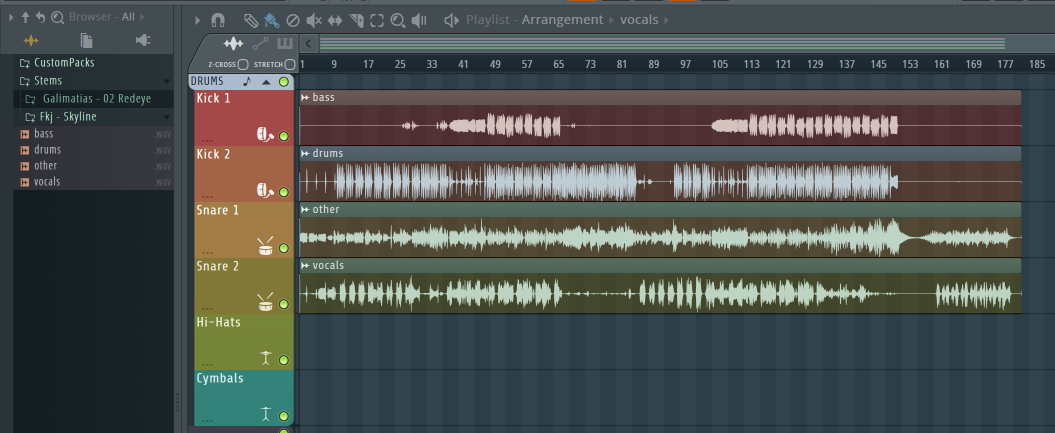After 5 (or is it 6?) months of social isolation, I realized I had an overflowing surplus of time. After a brief relapse into Warcraft III, I decided that surplus time could be better invested elsewhere. That “elsewhere” turned out to be music.
I wanted to get better at sound design and learn how to recreate song I like. Yesterday, I had an epiphany: I knew how to code. The following script takes a youtube URL and extracts the stems–vocals, bassline, drums, and other stuff–into a predetermined folder. I then added this folder to the “data” section of FL studio for easy sample searching.

Figure 1: I should probably learn Ableton…
This marks my first official foray into bash scripting since college (and also using my skills for something other than generating capital for my company).
Prereqs
-
Install Spleeter, an ML model that splits stems. Follow the link’s instructions if you don’t have conda.
conda install -c conda-forge spleeter -
Install ytdl, a script that downloads a youtube video
npm -g install ytdl
The script
Copy the following into your .{zsh,bash}rc and source it.
spleet() {
mkdir -p ~/Documents/Stems/
spleeter separate -i $1 -p spleeter:4stems -o ~/Documents/Stems/
}
yt() {
local name=`ytdl $1 -i | head -n 1 | awk -F ": " '{print $2}'`
local ename=`printf '%q' "$name"`
local defaultdir="$HOME/Music/ytdl"
mkdir -p defaultdir
local defaultloc="$defaultdir/$ename"
local loc="${2:-$defaultloc}"
echo "Downloading $ename from $1 to $loc"
ytdl $1 | ffmpeg -i pipe:0 -b:a 192K -vn $loc.wav
echo "$loc.wav"
}
ytd() {
local loc = `yt $1`
spleet $1
}
Usage
ytd <URL> - Downloads and split the URL
yt <URL> <OPTIONAL_DESTINATION> - Downloads the wav of a youtube URL
spleet <path_to_wav> - Splits a wav into 4 stems
Things I learned
- Functions > aliases.
- With
$1,$2,...$nand${2:-value}you can make full-featured CLI applications all within bash in a matter of seconds. $*means all the arguments to a command.- Backticks (``) allow you to execute subcommands and store them in values.
awkis a swiss army knife for piping out of one command into another.
Notes
DM me if you’re interested in going crate-digging (AKA clicking on obscure youtube links and finding cool samples). Hope this was useful, please enjoy responsibly. More cool stuff to come.







